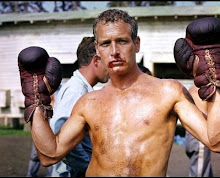
The bike that got American motocross off the ground-- the 1963 Husqvarna (Husky) Racer. This unrestored bike is No. 59 of just 100 250cc race machines Husqvarna built in ’63.
With its signature red and chrome glistening gas tank, the Husqvarna (or “Husky” as it’s affectionately known) was a stunning beauty of a bike, and a mud-slinging beast on the American motocross circuit. Back in the 1960s, the increasingly popular sport of American motocross was bogged down by clumsily modified (not to mention heavy) Harley-Davidson, Triumph & BSA road bikes. It was lumbering in antiquity and in dire need of innovation. Enter Edison Dye.
While on a motorcycle tour of Europe, Dye took particular note of European motocross and the lighter-weight, nimble, two-stroke bikes that were in stark contrast to the American scene. Swedish maker Husqvarna particulary stood out with their alloy engine components, and distinctive exhaust. He asked motorcycling legend Malcolm Smith (Steve McQueen’s riding chum in “On Any Sunday”) to take a Husky and put it through its paces for him. Upon Smith’s glowing review, Edison Dye decided to sign on as Husqvarna’s U.S. importer. The Screamin’ Swede was about to take American motocross by storm.

Heikki Mikkola, the “Flyin’ Finn” was one of the most popular and feared motocross racers of the 1970s. During his illustrious career, Mikkola collected four World Grand Prix Motocross Championship titles. In 1974 he won the World Grand Prix 500cc Championship on a Husqvarna.
In the early 1970s, Steve McQueen was the man (still is). He was the highest-paid star of the silver screen, a major sex symbol and an obsessed motorhead with a staggering collection of sports cars, four-wheelers and of course– bikes. So when McQueen dropped his trusty Triumph in favor of the new Husqvarna 400 Cross – overnight Husky became the only off-road bike that seemed to matter. The Husky also got a starring role alongside Steve McQueen (as well as riding legends Mert Lawwill and Malcolm Smith) in Director Bruce Brown’s classic– ”On Any Sunday”.
Bruce Brown recounts working with McQueen and the significant impact the film had–
“I remember going to Ascot Park and watching the dirt track races,” Brown said. “I met a few of the racers and was struck by how approachable and how nice most of these guys were. It wasn’t at all like the image a lot of people had about motorcycle riders in those days. I just thought it would be neat to do a movie about motorcycle racing and the people involved.”
Even though Brown already had a successful movie to his credit, he found that financing a film on motorcycling wasn’t going to be easy.

The Husqvarna 400 Cross-- The bike Steve McQueen made an overnight legend, and highly collectible.
“I talked to a few folks and knew that Steve McQueen was a rider,” Brown said. “Even though I’d never met him, I set up a meeting to talk about doing ‘On Any Sunday.’ We talked about the concept of the film, which he really liked. Then he asked what I wanted him to do in the film. I told him I wanted him to finance it. He laughed and told me he acted in films, he didn’t finance them. I then jokingly told him, ‘Alright, then, you can’t be in the movie.’
“The next day after the meeting, I got a call and it was McQueen. He told me to go ahead and get the ball rolling with movie — he’d back it.”

At one point, Brown found a perfect location for a sunset beach riding shot — Camp Pendleton Marine Corps Base.
“I figured there would be no way to get approval to film on the Marine base,” Brown recalls. “Steve McQueen said he’d see what he could find out. The next day he called and told to contact some General and the next thing you know we are shooting the beach sequences. It was pretty amazing the doors he was able to open.”
“On Any Sunday” seemed to strike a chord with youngsters. Kids would hide in movie theater bathrooms between showings so they could watch the film two or three times in one day. Thousands of kids across the country started saving money from their paper routes and summer jobs to buy a minibike after being inspired by the movie.

1970 Husqvarna 250 eight-speed, just like the one ridden by Malcolm Smith in”On Any Sunday”. “The Husky 250 eight-speed was just a really easy bike to ride,” Smith recalls. “It wasn’t super powerful, but on the fast roads of Elsinore, I could go over 100 mph. And because of the eight-speed gearbox, I could easily negotiate the tight stuff.”
“I think many people changed their minds about motorcyclists after watching the movie,” Brown said. “One particularly funny story was told by Mert Lawwill. Being a motorcycle racer he was sort of considered the Black Sheep of the family. The old patriarch of the family, Lawwill’s grandmother-in-law, went to see the movie and in the middle of one of the scenes featuring Lawwill she stood up and shouted, ‘That’s my grandson!’ Suddenly he was the big hero of the family.”

Malcolm Smith flat-out gettin’ after it, Husqvarna style.

Steve McQueen on his Husqvarna 1971 400cc Cross. This is the bike that Steve rode on screen -- "On Any Sunday".

Steve McQueen romping on his Husqvarna 400 Cross –Sports Illustrated, 1971.

The legendary motorcyclist and Husqvarna rider– Malcolm Smith.

Wrenchmonkees’ insane flat track inspired Harley Davidson Sportster with an old Husqvarna tank.















































